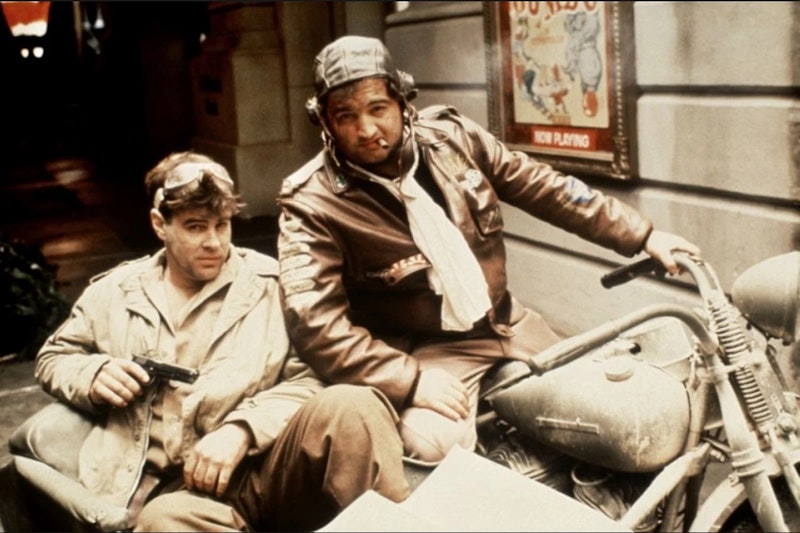After two era-defining mega-hits—Jaws in 1975 and Close Encounters of the Third Kind in 1977—Steven Spielberg “crashed” and “burned” like so many other New Hollywood directors, most of them his friends. 1979’s 1941 made only $90 million against a budget of… $34 million. Spielberg’s biggest “failure” was a success; he didn’t have a REAL bomb until The Fabelmans in 2022. I’m sure that one stung more than 1941, even if that was relatively early in his career. By 1979, Spielberg had already redefined American and thus world cinema by inventing the blockbuster; George Lucas’ Star Wars in 1977 further cemented the formula, rhythm, and strategies of the movies that would fill multiplexes in the 1980s, 1990s, and 2000s. Spielberg’s “blank check” movie was 1941, an anarchic full-speed slapstick comedy set in Los Angeles right after Pearl Harbor. Richard Dreyfuss, mercifully, doesn’t return.
John Belushi, Dan Aykroyd, Lorraine Gary, Nancy Allen, Slim Pickens, Toshiro Mifune, Christopher Lee, Treat Williams, and Tim Matheson lead the ensemble across two hours of pratfalls, explosions, and people falling on their heads. In one shot, Belushi fell off the wing of his plane and landed smack on his head and was out cold, sent to the hospital; Spielberg kept the shot in the movie. Who wouldn’t? A stuntman was nearly crushed and set on fire by a car and a moving train in Phil Karlson’s Framed, starring Joe Don Baker; no one was seriously hurt, so the shot remains. It’s an impossible stunt, just like in 1978’s Steel, a construction thriller dedicated to late stuntman A.J. Bakunas, who fell to his death on camera—it’s in the movie. This is the world that Spielberg was working in. It’s amazing many more people haven’t been killed making movies.
After a while, Belushi wore a shirt on set that read “STEVEN SPIELBERG, 1946-1941.” Like so many other blank-check movies of the New Hollywood set, 1941 is too high on itself to see where it’s overlong, where it has pacing problems, where the air starts to leak out. Jaws and Close Encounters are tight movies; Spielberg never got as messy as in 1941. The only other film of his that has the same non-stop blowout rhythm is Indiana Jones and the Temple of Doom, which is a better movie on a technical level, but it’s for children. Plenty of World War II movies are fine for kids—like 1941—and no matter how compressed or contrived, they’re learning about something that really happened. Indiana Jones has no relationship to our world, it’s all empty signs and sons of the American Empire fantasy; 1941 may be a film of pies in faces, people falling over, but it’s based on (a still obscure) event in the history of the war: rumors of an attack on Los Angeles in the days immediately following Pearl Harbor.
Simply by working within the context of the time, 1941 is a richer work than slightly more sober blockbusters that would soon follow. It’s also a good yardstick to measure how long it takes for a national tragedy to become safe to joke about in public: 38 years. 1941 may have “underperformed,” but few reviews criticized it for shocking bad taste. As zany as it is, 1941 is the last Spielberg movie with any sense of danger, any risk; once the 1980s begins, he’s king of the world, and that’s boring. In 1941, he’s still dropping plates, and things fall apart. Almost none of it is funny per se, but it’s made on a such grand scale that you stop paying attention to the jokes and switch to the stunts, the explosions, the montage. Spielberg would never be this free to fail again.
—Follow Nicky Otis Smith on Twitter: @MonicaQuibbits

